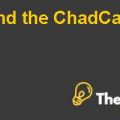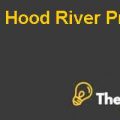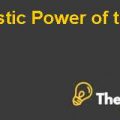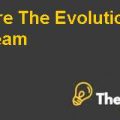Background of the Case
This case describes how the Japanese Oriental Land Corp. The management team was eager to expand the business beyond its business Disneyland in Japan, and therefore, considers that investment in a new project - Disneyland Park Sea.
After negotiations with Walt Disney which are notoriously difficult in the negotiations, demanding 10% royalty on entries, share of 5% of food and real novelty, management of Japanese Oriental Land Corp were skeptical of the undertaken projects as it involved a great risk for them, since they will not invest more than just on earth, but assume 100% of the cost of construction as well.
In addition to this, unlike Anglo American companies that focus exclusively on maximizing shareholder’s wealth, especially in the short term. Japanese corporations as Japanese Oriental Land Corp would focus on maximizing long-term corporate wealth which includes financial, technical, market and human resources, placing the parties to the two shareholders in the process of making investment decisions.
Question 1
Capital budgeting Analysis
Average Accounting Return
In Japan, the most common method is to use the AAR method as it reflects more the culture in which Japanese companies are running for example, do not value the opportunity cost of its assets, and rarely deal with foreign firms. On the other hand, we see that the calculated AAR = -1%, leading the management team concluded that the investment is unattractive and pointless to continue.
However, the use of AAR only as an assessment tool can be overly simplistic as a procedure of this kind does not take into account the time value of money, and timing of cash flows. In addition, cash flows after operating period are completely ignored and the calculations do not take into account the discount rate of the market.
Therefore, we conclude that AAR may be useful as a rough measure of investment risk; however, we felt to be inadequate for assessing potential projects in the current era of business.
Net Present Value and Investment Rate of Return
The team of Walt Disney, however, are using "Western" conventional methodologies: NPV and IRR; that addresses the deficiencies in the method of AAR.
DCF was calculated to rebuild both figures together as occurred in the case and to cross check this with the flow numbers cash. The results are within walking distance of each other, and therefore we are reasonably sure of the accuracy of the numbers. On the other hand, VPN proves to be positive in $ 466.5 million, and the IRR is 8.3%.
These numbers are in the contrast to the figures of ARR for Japan. Although NPV and IRR methods directly maximizing shareholder wealth, in the understanding of Japanese management, we understand that the NPV and IRR method may not fit with the culture of decision-making of Japanese management. Consequently, the case mentioned that Japanese managers tend to be less "numbers driven" than their "Western" and would serve to balance the interests of stakeholders rather than shareholders only and dealing long-term wealth of the company.
Tokyo Disneyland and the Disney Sea Park Case Solution
Average Cash Flow Return
The Bank of Japan proved to be instrumental in mediating between WD and OL therefore,the outcome was successful. Due to its international business exposure and experience in mediation between Japanese and foreign customers, IBJ proposed an alternative method in which it compromised between AAR and NPV / IRR in calculating the financial projections. As shown in Appendix A, the CAIP is positive at + 79.1%, considerably better than the original AAR -1%.
While this method uses the concept of cash flow and uses the initial investment as the denominator, yet not the discounted cash flow is used, and we suspect that this method is geared more towards comfort level managers OL, while WD managers will continue to use the NPV and IRR figures.
Question 2
Undertaking of Project
However, moving forward, there is a growing need to internationalize Japanese. Based on this, it seems that the future of making capital budgeting decisions would move towards the Anglo-American method of NPV and IRR calculations. NPV and IRR methods encapsulate the capacity to generate cash flow based on the life cycle of assets invested WACC as taking appropriate discount rate for the time value of future cash flow. Disney Sea Park is a highly intensive infrastructure project capital, such methods more accurately reflect risk and performance compared to the AAR method; AAR does not normalizes due to the future value of cash flows, therefore the plant would produce an unfair assessment of cash flow when real income comes in at a later stage. Although CAIP uses cash flow adjusted terminal value of the initial investment, this method still does not take into account the position of discount cash flow therefore could not reflect on the real risk and going concern assumption of the project........................
This is just a sample partial case solution. Please place the order on the website to order your own originally done case solution.













